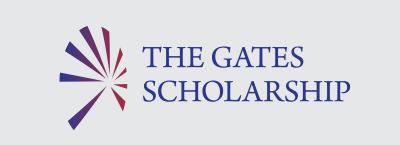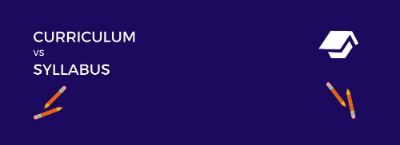Regardless of the specialty and occupation, access to quality information is key. Whether you search for information relevant to your personal needs or you need to conduct research, it's important to know what information you can trust and rely on.
Especially for your studies or jobs related to content generation, the toolbox for quality research is essential. There may be different sources with both valid and invalid information. However, once you decide to rely on the source and include it in your final research result, you also become responsible for the quality of information it provides.
This article contains insights and methods to access academic materials and distinguish between the sources to identify the most valid ones.
Description of an Academic Journal
Academic journals are different from other sources, mainly by the high quality of information they provide and the process of content quality control. Academic journals' purpose is to reveal the latest scientific advancement and commit to the research continuation and development in different fields.
Researchers, scientists, and the academic community choose to publish their work results in scholarly sources. In this way, every researcher explores the previous studies to identify the gaps or areas to develop further. Therefore, academic journals are more than just a platform for publications. They are forums for scientific conversations and cooperation.
Academic journals have a high degree of validity. First of all, rarely a non-professional can decide and publish work in an academic journal. Its main stakeholders, both as publishers and readers, are people from academic fields with a solid educational and professional background. The expertise of authors is the first point for the quality of publications.
Besides, the materials you read in academic journals are usually peer-reviewed, which means other specialists in the field reviewed and approved the content for publication.
Academic journals correspond to the predefined standards of both research and the presentation of final results. Particularly, all the provided facts should be either a result of original practical research or a full citation to a reliable source. Also, academic articles should add a new word to the existing base of knowledge in the field.
To sum up, academic journals are sources for valid, trustworthy, and reliable information from the field experts. There are journals for different scientific disciplines and subdisciplines, providing you with a great base for research in any area.
Types of content in Academic Journals
Most often, university professors may require you to use scholarly articles for your research papers. Your search results in academic platforms may be in different formats. The below given main forms of academic content may help you better navigate among the sources for citation.
- Original research article
This type of article is the results' documentation of the original experiment or study of the author. This article usually includes the methodology section to provide the reader with the validity of the presented results. It also contains the result's section and a conclusion.
- Review article
You may also meet these articles under the titles of a literature review or systematic review. Here, the author presents a summary of several original research articles in one place. In this type of article, there is no methodology section, and are extensive bibliographies, instead.
- Theoretical article
In this article, authors either develop existing theories into new ones or interpret the existing ones in a new way.
- Book review
Through book reviews, scholars provide a summary or overview of the newly published book.
- Editorial
Similar to book reviews, editorials provide a summary of the newly published issue of the academic journal. Editors usually write editorials of scholarly journals.
Where to Find Academic Journals?
There are two options to find academic materials related to your research area. You should either directly access your field's academic journals to search for topics or navigate through the general search results to identify the scholarly articles.
Consultation with the professors, librarians, or academic advisors in your university may give you a direction to the journals relevant to your research topic. Otherwise, you may search for academic journals for your area yourself. There are academic journal directories where you can filter sources by the scientific discipline and topics. You may use the below-mentioned directories:
- Academic journals
- Oxford Academic
- The Directory of Open Access Journals
- Education Resources Information Center
- Public Library of Science
- Digital Library of the Commons
In case of searching for specific topics, rather than for the entire journal, you may limit search engines' features to show only academic materials. For example, you may use Google Scholar or Google Books instead of the ordinary Google search, which will give you only scientifically accredited sources of information.
As another option, you may search topics in academic platforms, the databases of which include solely scholarly materials. A drawback of academic platforms is that there may be articles accessible only for paid subscriptions. This is the point for most academic platforms. However, there are extended opportunities for free access within the COVID-related support measures, which you can benefit from.
One of such opportunities is the extension of JSTOR's monthly free articles from 6 to 100. JSTOR is one of the leading pools of academic content, providing its users with 12 million academic journal articles, 85,000 books, and 2 million primary source documents in 75 disciplines.
There was an opportunity to read only six free articles a month before the pandemic. Currently, the platform provides the opportunity to read 100 free articles a month in exchange for individual account registration. You may read more of the platform to begin your research journey.
Another great opportunity to access academic publications for free is Sci-Hub. Found by the paid access opposer Alexandra Elabakyan in 2011, Sci-Hub is the largest academic content repository. It downloads the paid articles from online libraries and shares them on the platform for free. Read our blog about Sci-Hub history and current operation for more detail.
How to distinguish Academic articles?
Below listed academic articles' characteristics will help you filter scholarly publications among all the available sources quickly. First of all, the main feature of those articles is that they are peer-reviewed. So, the ways to understand whether the article is peer-reviewed are presented separately, among all other characteristics.
Note that the below-mentioned characteristics may hint to you that an article is peer-reviewed but are not necessary components. The publication can still be peer-reviewed while not corresponding to any of them. So, the following steps may help you to navigate among articles to find academic ones.
1. Look at the masthead. A masthead is the main information usually written on the cover, first pages, or at the end of the publication. It gives information such as the names of authors, editors, publishers, dates, etc. Here you can also find the information that the article is peer-reviewed.
2. Find out the policies and methods to publish an article in the journal. If you can publish something there instantly, hardly could they correspond to an academic niche. On the contrary, you may read publishing requirements like "Send some copies of your work" and the date where you will be contacted back for either approval or feedback. In that case, you may conclude the source takes your draft for reviewing and discussing before publishing.
3. A straightforward but effective option is to check your found article's source in databases for academic materials. You may use the academic sources mentioned above or others identified by your research.
Other than peer-reviewed, there are characteristics that you can identify at first sight of the publication.
1. The writing style and vocabulary are formal.
2. There are many technical terms with exact descriptions rather than a general approach.
3. All the facts brought from external sources have detailed and precise citations.
4. Font style and size are formal, corresponding to accepted writing standards.
5. There are not many and bright images, but graphs, charts instead.
6. The article includes an abstract in the beginning, also separate parts for methodology, results, conclusion, or references.
7. The article contains bibliographic information.
8. The author's expertise in the field is described in detail.
The world would be a lot better place with quality research. We hope that the sources and details of the academic articles mentioned in this article will help you conduct more comprehensive research for your further work.
Published on Jan 15, 2021







